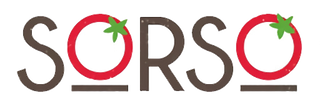As recently as a few years ago, most of us never thought much about the food supply chain or where food comes from. Then again, most of us rarely thought or used the word “pandemic” either…The world is a very different place now.
And, because of that, more of us than ever before are opening up our fridges and wondering where the food comes from. Or, in some cases, where it’s not coming from. For example, a little over a year ago, Bloomberg UK wrote about how a global shortage of steel sheets to make cans threatened Italy’s tomato harvest. Clearly, that’s an issue close to our hearts!
In recent weeks, based on what food is in short supply, we’ve seen products like Lurpak shoot up in price. We’ve also seen bust-ups between Heinz and Tesco about who should bear the brunt of those price increases. Heinz argued that consumers need to pay more, Tesco didn’t agree. Tesco won…for now, at least.
But they may not win forever. Transportation costs are extremely high right now, thanks to a double whammy of the pandemic and rising oil prices, which is having a huge impact on food supply chain management.
That’s increasingly being reflected in the prices of foods that are coming from further afield.
Sustainability and spending
One positive outcome – we’re always looking for silver linings – of people thinking critically about where food comes from is that more people are buying locally.
We’re not saying that British is always better, but products coming from closer to home means lower transportation costs and a smaller carbon footprint. In other words, an overall lowering of the food supply chain environmental impact. It’s also one of the reasons we expect to see the farm-to-table movement get a second wind in the months to come.
Of course, our climate means that the UK will never be able to be fully self-sustainable if we want to enjoy the same foods we do currently – you shouldn’t expect to see British-grown pineapples on the shelves any time soon!
Still, we try to source as many of our ingredients locally as we possibly can. That means visiting local markets and exploring different options to see what tastes best. Then, everything we sell is made with love in our London kitchen.
Here at SORSO we are not reliant on tons of external suppliers in the food supply chain like bigger companies are, which means we have more control over our own destiny. And, because we sell directly to our wonderful customers, we don’t have to build mass distribution into our prices.
As much as we’d love to, we can’t promise that our prices won’t ever go up. But, as a family-run business, we understand that the cost of living crisis is biting hard right now. Like Tesco has (so far), we’ll always try to protect our customers from that as best as we can.
Where will our food come from in the future?
We’ve already seen rapid adoption of supermarket deliveries, wonky veg boxes, and grocery deliveries by Uber Eats. Is that the future of food supply chain management?
It’s not too difficult to imagine a world where food comes from deliveries of locally made products that go right to the doorsteps of consumers. In that respect, we’d like to think that we’re ahead of the curve among tomato sauce makers!
The food supply chain – UK and internationally – is complicated and, even as the pandemic ostensibly winds down, things won’t go back to normal overnight. We’re increasingly seeing though, from working habits to holidays and social gatherings, that lots of people don’t want to go back to a normal that didn’t necessarily work for them. That extends to food too.
Unsurprisingly, most people are more interested in fresh, locally-grown products that are free of pesticides and antibiotics. Products that haven’t been frozen and flown all over the world just to end up in their fridge. Food that’s actually in season, rather than something that’s been artificially grown under a lamp.
Whatever happens next, and there’s no denying that there’s plenty of uncertainty in the world right now, the question of knowing more about where our food comes from is one that’s sure to remain relevant. And, as far as we’re concerned, that has to be a good thing!

